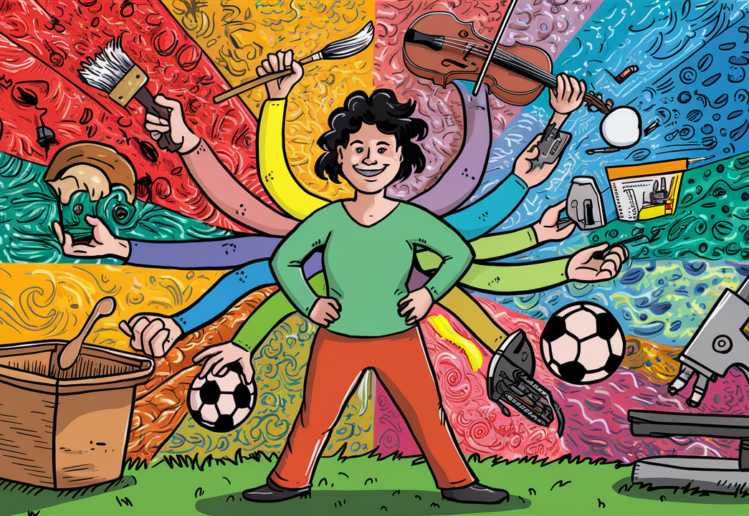Last week, one of my professors talked about multipotentiality, a concept that was completely new to me. A multipotentialite is someone with many interests and creative pursuits, who enjoys variety and often does well in multiple areas. Unlike specialists who focus deeply on one thing, multipotentiality finds happiness and fulfillment by exploring different fields.
Multipotentiality challenges the usual idea of success, which often focuses on following one career path. It shows that having multiple interests isn’t a lack of direction but a unique strength. Multipotentialites are adaptable, learn quickly, and can combine ideas from different areas. This mix often leads to new solutions and fresh viewpoints.
Being a multipotentialite can be both exciting and challenging. On one hand, exploring various interests can make life rich and fulfilling. On the other hand, societal expectations and the pressure to stick to one path can cause internal conflict. However, embracing multipotentiality means recognizing and valuing diverse talents and understanding that success isn’t one-size-fits-all.
Many well-known people have been multipotentialites. Leonardo da Vinci, who was a painter, scientist, and inventor, is a great example. Today, people like Elon Musk, who has made big contributions to software, electric cars, and space travel, show the power of being a multipotentiality.
For those who see themselves as multipotential, it’s important to find a supportive network and environments that encourage exploration and growth. The digital age, with its vast resources and connectivity, offers great opportunities for learning and collaboration.
In conclusion, multipotentiality is a valuable strength in our complex world. It encourages lifelong learning and combining different fields to create new solutions. By embracing their many interests, multipotentiality can lead rich lives and contribute to society. The key is to redefine success and celebrate the power of pursuing multiple passions.









